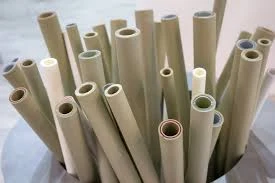
-
 Afrikaans
Afrikaans -
 Albanian
Albanian -
 Amharic
Amharic -
 Arabic
Arabic -
 Armenian
Armenian -
 Azerbaijani
Azerbaijani -
 Basque
Basque -
 Belarusian
Belarusian -
 Bengali
Bengali -
 Bosnian
Bosnian -
 Bulgarian
Bulgarian -
 Catalan
Catalan -
 Cebuano
Cebuano -
 China
China -
 China (Taiwan)
China (Taiwan) -
 Corsican
Corsican -
 Croatian
Croatian -
 Czech
Czech -
 Danish
Danish -
 Dutch
Dutch -
 English
English -
 Esperanto
Esperanto -
 Estonian
Estonian -
 Finnish
Finnish -
 French
French -
 Frisian
Frisian -
 Galician
Galician -
 Georgian
Georgian -
 German
German -
 Greek
Greek -
 Gujarati
Gujarati -
 Haitian Creole
Haitian Creole -
 hausa
hausa -
 hawaiian
hawaiian -
 Hebrew
Hebrew -
 Hindi
Hindi -
 Miao
Miao -
 Hungarian
Hungarian -
 Icelandic
Icelandic -
 igbo
igbo -
 Indonesian
Indonesian -
 irish
irish -
 Italian
Italian -
 Japanese
Japanese -
 Javanese
Javanese -
 Kannada
Kannada -
 kazakh
kazakh -
 Khmer
Khmer -
 Rwandese
Rwandese -
 Korean
Korean -
 Kurdish
Kurdish -
 Kyrgyz
Kyrgyz -
 Lao
Lao -
 Latin
Latin -
 Latvian
Latvian -
 Lithuanian
Lithuanian -
 Luxembourgish
Luxembourgish -
 Macedonian
Macedonian -
 Malgashi
Malgashi -
 Malay
Malay -
 Malayalam
Malayalam -
 Maltese
Maltese -
 Maori
Maori -
 Marathi
Marathi -
 Mongolian
Mongolian -
 Myanmar
Myanmar -
 Nepali
Nepali -
 Norwegian
Norwegian -
 Norwegian
Norwegian -
 Occitan
Occitan -
 Pashto
Pashto -
 Persian
Persian -
 Polish
Polish -
 Portuguese
Portuguese -
 Punjabi
Punjabi -
 Romanian
Romanian -
 Russian
Russian -
 Samoan
Samoan -
 Scottish Gaelic
Scottish Gaelic -
 Serbian
Serbian -
 Sesotho
Sesotho -
 Shona
Shona -
 Sindhi
Sindhi -
 Sinhala
Sinhala -
 Slovak
Slovak -
 Slovenian
Slovenian -
 Somali
Somali -
 Spanish
Spanish -
 Sundanese
Sundanese -
 Swahili
Swahili -
 Swedish
Swedish -
 Tagalog
Tagalog -
 Tajik
Tajik -
 Tamil
Tamil -
 Tatar
Tatar -
 Telugu
Telugu -
 Thai
Thai -
 Turkish
Turkish -
 Turkmen
Turkmen -
 Ukrainian
Ukrainian -
 Urdu
Urdu -
 Uighur
Uighur -
 Uzbek
Uzbek -
 Vietnamese
Vietnamese -
 Welsh
Welsh -
 Bantu
Bantu -
 Yiddish
Yiddish -
 Yoruba
Yoruba -
 Zulu
Zulu
fiberglass tank
The Benefits and Applications of Fiberglass Tanks
Fiberglass tanks have become increasingly popular across various industries due to their durability, lightweight nature, and resistance to corrosion. Made from a composite of glass fibers and resin, these tanks offer a variety of advantages that make them an ideal choice for storage and transport of liquids, especially in environments where traditional materials might fail.
One of the most significant benefits of fiberglass tanks is their resistance to corrosion. Unlike metal tanks, which can rust and degrade over time when exposed to moisture or harsh chemicals, fiberglass is inherently resistant to corrosive agents. This quality makes fiberglass tanks particularly suitable for storing chemicals, wastewater, and other aggressive substances. As a result, industries such as water treatment, chemical processing, and agriculture have increasingly adopted fiberglass tanks to enhance the safety and longevity of their operations.
Another advantage of fiberglass tanks is their lightweight construction. Compared to steel or concrete tanks, fiberglass tanks are significantly lighter, making them easier to transport and install. This feature can lead to cost savings in both shipping and installation processes. For instance, building a large concrete tank requires significant machinery and labor, while a fiberglass tank can often be installed with less equipment and fewer personnel. This not only streamlines the process but also reduces the overall project timeline.
Additionally, fiberglass tanks are highly customizable. They can be manufactured in various shapes and sizes to meet the specific needs of different applications. This flexibility allows businesses to optimize their tank design for space constraints or specific functional requirements. Furthermore, fiberglass tanks can be designed with integrated features such as inspection ports, manways, and customized fittings, allowing for convenient access and maintenance.
fiberglass tank

In terms of environmental impact, fiberglass tanks also hold an advantage. Their longevity and resistance to degradation lead to lower replacement rates compared to traditional materials, minimizing waste. Furthermore, many manufacturers are now producing fiberglass tanks with eco-friendly resins, aligning with the growing demand for sustainable products.
Fiberglass tanks are not limited to industrial applications. They can also be found in residential settings, particularly for rainwater harvesting systems and septic tanks. With the increasing focus on sustainability and resource conservation, homeowners are turning to fiberglass tanks as an effective way to manage water resources efficiently.
Despite the numerous benefits, it is essential to consider the initial cost of fiberglass tanks. While they may be more expensive upfront compared to other materials, their durability, maintenance savings, and long lifespan often justify the investment in the long run. Moreover, as technology continues to advance, the manufacturing processes for fiberglass tanks are becoming more cost-effective, making them an increasingly viable option for a wider range of applications.
In conclusion, the versatility and advantages of fiberglass tanks make them an excellent choice for various storage needs. Their resistance to corrosion, lightweight construction, customization options, and environmental benefits position them as a superior alternative to traditional tank materials. As industries and consumers alike continue to seek safer, more durable, and sustainable solutions, fiberglass tanks are likely to see even greater adoption in the future.
Latest news
-
Exploring the Benefits of Top Hammer Drifter Rods for Enhanced Drilling PerformanceNewsJun.10,2025
-
High-Precision Fiberglass Winding Machine for GRP/FRP Pipe Production – Reliable & Efficient SolutionsNewsJun.10,2025
-
FRP Pipes & Fittings for Shipbuilding - Corrosion-Resistant & LightweightNewsJun.09,2025
-
Premium FRP Flooring Solutions Durable & Slip-ResistantNewsJun.09,2025
-
Premium Fiberglass Rectangular Tanks Durable & Lightweight SolutionNewsJun.09,2025
-
Tapered Drill String Design Guide Durable Performance & UsesNewsJun.09,2025









